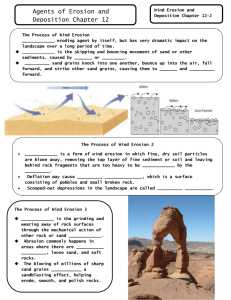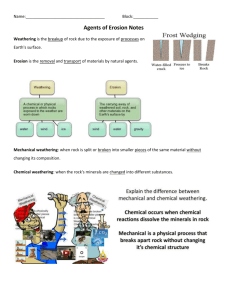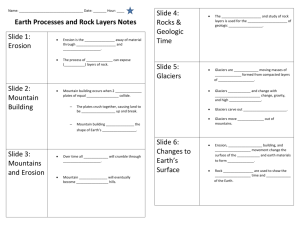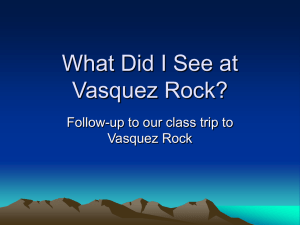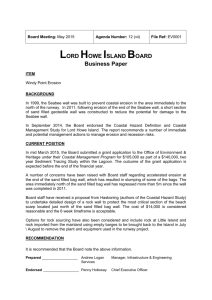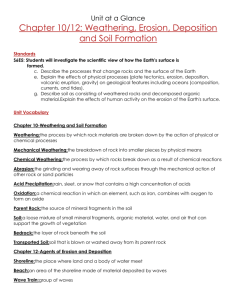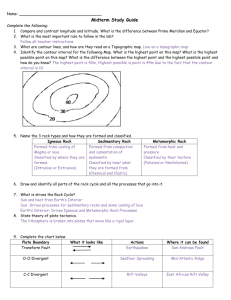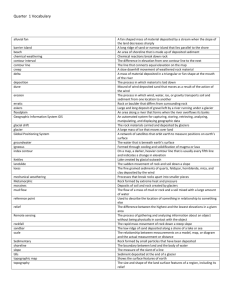Study Guide Chapter 12 Erosion & Deposition Quiz
advertisement
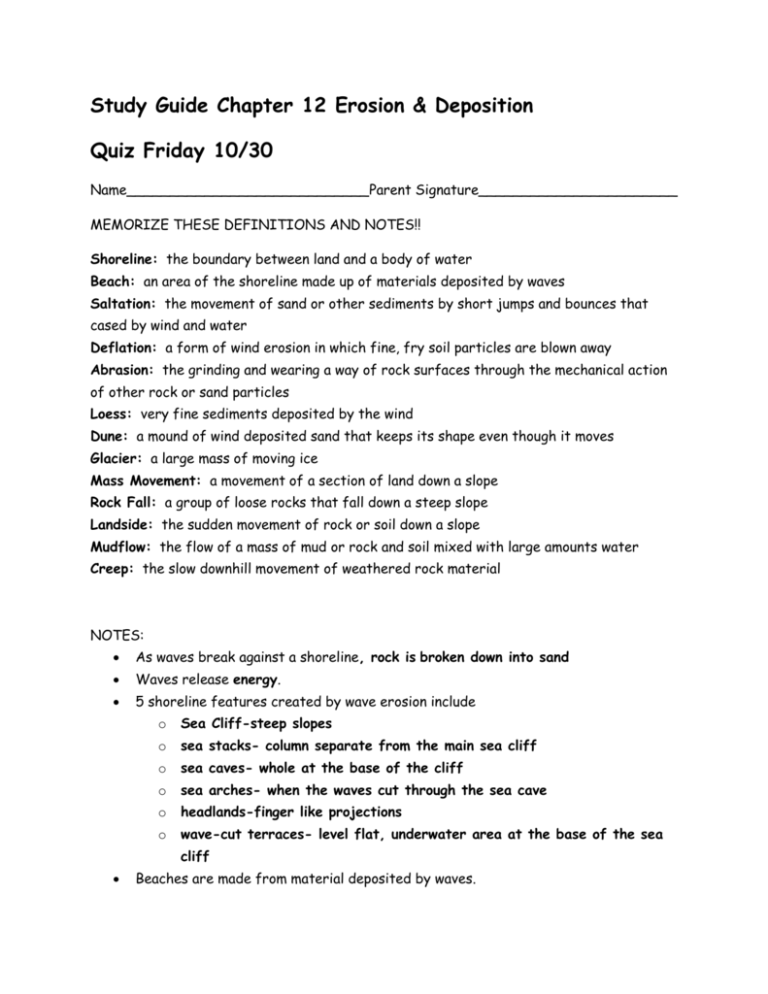
Study Guide Chapter 12 Erosion & Deposition Quiz Friday 10/30 Name____________________________Parent Signature_______________________ MEMORIZE THESE DEFINITIONS AND NOTES!! Shoreline: the boundary between land and a body of water Beach: an area of the shoreline made up of materials deposited by waves Saltation: the movement of sand or other sediments by short jumps and bounces that cased by wind and water Deflation: a form of wind erosion in which fine, fry soil particles are blown away Abrasion: the grinding and wearing a way of rock surfaces through the mechanical action of other rock or sand particles Loess: very fine sediments deposited by the wind Dune: a mound of wind deposited sand that keeps its shape even though it moves Glacier: a large mass of moving ice Mass Movement: a movement of a section of land down a slope Rock Fall: a group of loose rocks that fall down a steep slope Landside: the sudden movement of rock or soil down a slope Mudflow: the flow of a mass of mud or rock and soil mixed with large amounts water Creep: the slow downhill movement of weathered rock material NOTES: As waves break against a shoreline, rock is broken down into sand Waves release energy. 5 shoreline features created by wave erosion include o Sea Cliff-steep slopes o sea stacks- column separate from the main sea cliff o sea caves- whole at the base of the cliff o sea arches- when the waves cut through the sea cave o headlands-finger like projections o wave-cut terraces- level flat, underwater area at the base of the sea cliff Beaches are made from material deposited by waves. Longshore currents cause sand to move in a zig zag pattern along the shore. Areas with little plant cover and desert areas covered with fine rock material are more vulnerable than other areas to wind erosion. Saltation is the process in which sand sized particles move in the directions of wind. 3 Landforms that are created by wind erosion and deposition are o desert pavement-rocks left behind with wind blows away soil o deflations- process in which wind blows away all the dirt o hollows-Depression area that has been deflated (all sediment removed) o dunes- mounds of sand Dunes move in the direction of the wind. Dunes have a gentle sloping side in the direction of the wind and then a slip face side on the opposite side. Alpine glaciers form in mountainous areas. Continental glaciers spread across entire continents. Glaciers can move by sliding or by flowing by the force of gravity. Alpine glaciers can carve o o o o o Arêtes Horns U-shaped valleys Hanging valleys. Two types of glacial drift are o o Cirques Till Stratified drift. Four types of moraines are o Lateral o Medial o Ground o terminal Gravity cause rocks and soil to move downslope If the slope on which material rests is greater than the angle of repose, mass movement will occur. Four types of rapid mass movement are o rock falls o landslides o mudflows o lahars. Water, plant roots, and burrowing animals can cause creep.

